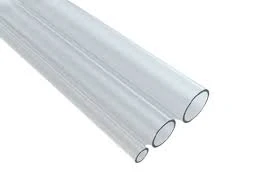Nov . 05, 2024 06:19 Back to list
industrial pipe fittings
Understanding Industrial Pipe Fittings An Essential Component in Piping Systems
Industrial pipe fittings play a crucial role in the construction and maintenance of piping systems across various industries, including oil and gas, water supply, manufacturing, and construction. These fittings are used to connect, redirect, or terminate sections of pipe, ensuring that fluids and gases can flow safely and efficiently throughout a system. In this article, we will explore the different types of pipe fittings, their materials, applications, and the importance of choosing the right fitting for specific industrial needs.
Types of Industrial Pipe Fittings
Industrial pipe fittings come in a variety of shapes and sizes, each serving a unique purpose. The most common types include
1. Elbows Used to change the direction of flow in pipes, elbows come in standard angles of 90, 45, or 22.5 degrees. They can be made from a range of materials, including steel, plastic, and copper, and are essential for navigating around obstacles in piping layouts.
2. Tees These fittings enable the branching of a pipe into two separate lines, forming a T-shape when viewed from above. Tees are critical in creating junctions in piping systems that require the diversion or splitting of flow.
3. Reducers When pipe diameters must be changed, reducers are used to connect pipes of different sizes. This is particularly important in applications where fluid dynamics require a transition to maintain pressure and flow rates.
4. Caps and Plugs Caps are used to close off the ends of pipes, while plugs serve a similar purpose but can also fit inside a fitting. These are useful for maintaining pipe integrity during maintenance or when temporarily removing sections of piping.
5. Couplings These fittings connect two pipe ends together. Couplings can be used when the same diameter is required, or to join different diameter pipes through specialty couplings.
Materials Used in Pipe Fittings
The choice of material for pipe fittings largely depends on the application, environmental conditions, and the type of fluid being transported. Common materials include
- Steel Known for its strength and durability, steel fittings are often used in high-pressure and high-temperature applications. Stainless steel offers corrosion resistance, making it ideal for chemical and food processing industries.
industrial pipe fittings

- PVC and CPVC These plastic materials are lightweight, resistant to corrosion, and easy to install, making them popular in residential and commercial applications, particularly in water distribution systems.
- Copper Used mainly in plumbing and HVAC systems, copper fittings are known for their thermal conductivity and resistance to corrosion. They are commonly employed in systems where high purity is necessary.
- Brass Often chosen for its resistance to corrosion and ease of machining, brass fittings are used in a variety of applications, including plumbing and gas lines.
Importance of Choosing the Right Fitting
Selecting the appropriate pipe fitting is crucial for ensuring the safety and efficiency of any piping system. Incorrect fittings can lead to leaks, pressure drops, and system failures, which can result in costly repairs and safety hazards. When specifying fittings, several factors should be considered
- Pressure and Temperature Ratings Fittings must support the operating pressure and temperature of the system. Exceeding these ratings can result in catastrophic failures.
- Compatibility with the Fluid The chemical composition of the fluid being transported affects the choice of material for fittings. Corrosive fluids require materials that can withstand their effects.
- Installation Environment Fittings exposed to extreme temperatures, humidity, or corrosive environments must be selected based on their resistance to these conditions.
- Size and Flow Requirements Proper sizing ensures optimal flow and pressure maintenance within the system. Oversized or undersized fittings can disrupt fluid dynamics and system performance.
Conclusion
Industrial pipe fittings are critical elements in the construction and functionality of piping systems across a myriad of sectors. By understanding the types, materials, and selection criteria for these fittings, engineers and technicians can design systems that are safe, efficient, and durable. Proper planning and selection not only enhance system performance but also contribute to overall operational efficiency and safety, making industrial pipe fittings an indispensable aspect of engineering in any industrial setting.
-
25mm PVC Irrigation Pipe - Durable & Efficient Watering Solution for Farms & Gardens
NewsJul.05,2025
-
HDPE Culvert Pipe Supplier – Durable, Leak-Proof & Easy Installation Solutions
NewsJul.05,2025
-
High Transparency PVC Clear Sheet Super Transparency PVC Sheets & HDPE Cutting Board Supplier
NewsJul.04,2025
-
High-Quality PVC-M Pipe Supplier Trusted PVC Pipe Company & 75mm PVC Connection Pipe Solutions
NewsJul.04,2025
-
PVC Transparent Sheet Roll - Durable & Flexible PVC Plastic Sheet Roll for Industrial & Home Use
NewsJun.24,2025
-
High-Quality PVC PPR Pipes and Fittings Durable ERA PPR Solutions
NewsJun.10,2025

